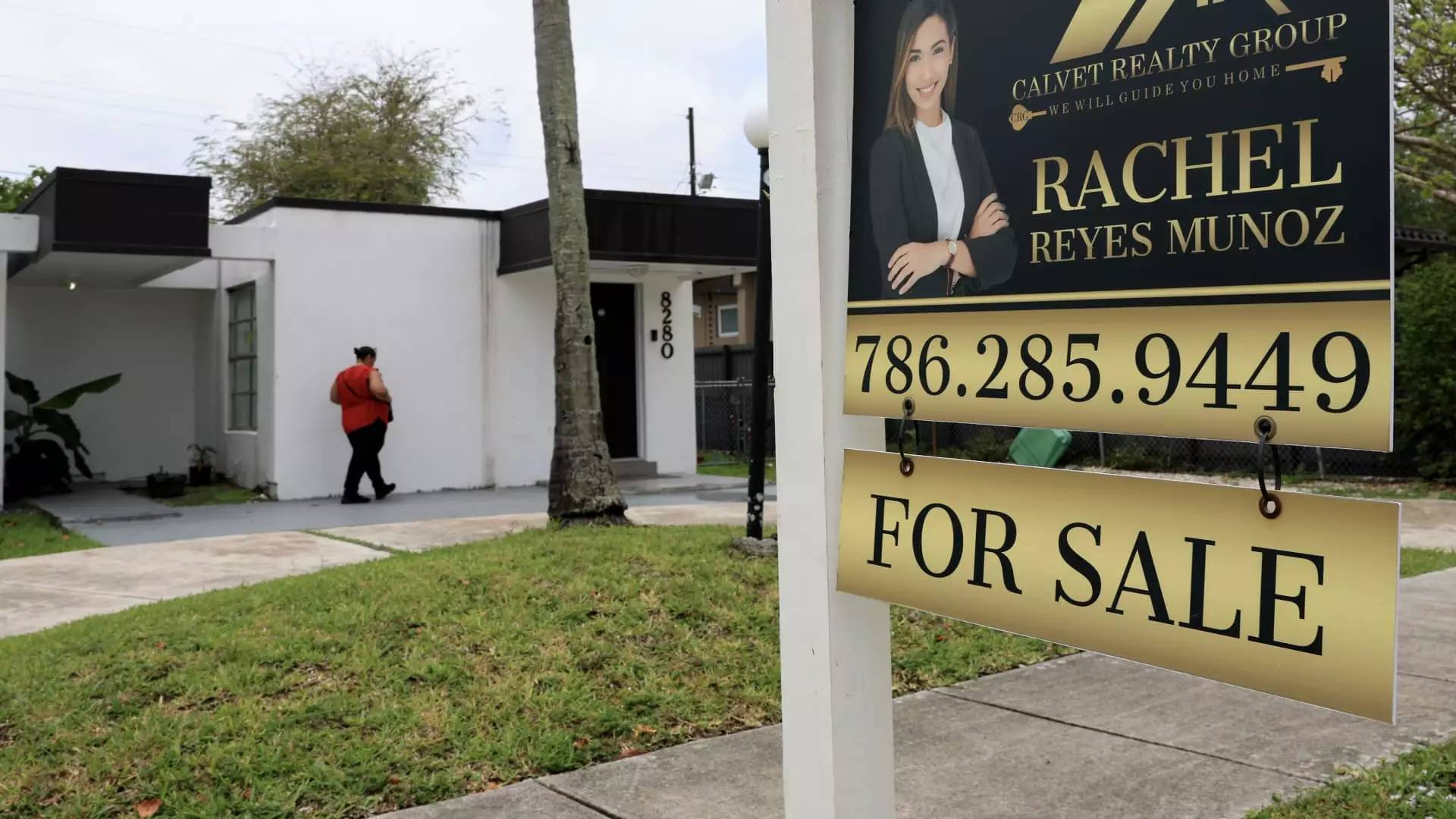In the face of an unpredictable economy and looming concerns over trade tariffs, the recent spike in mortgage demand offers a refreshing glimmer of hope for the housing market. According to the Mortgage Bankers Association (MBA), total mortgage application volume climbed 1.1% last week, marking the second consecutive week of growth—a promising signal amid the clouds of economic uncertainty that have dampened buyer sentiment for much of April. Rather than retreating in fear, homebuyers seem to be responding aggressively to a burgeoning inventory of available properties, highlighting a shift in conditions that favors those looking to buy.
Interest Rates: An Unyielding Challenge
Despite the increase in demand, there remains a daunting hurdle in the form of rising interest rates. The average contract interest rate for a 30-year fixed-rate mortgage ticked up to 6.86%, a jump that, while seemingly marginal, translates to substantial long-term costs for homebuyers. This increase serves as a reminder that financial obstacles are never far from the surface, yet the resolve exhibited by buyers suggests a willingness to absorb these costs in exchange for securing a property. It begs the question: Are we witnessing the dawn of a new era in homeownership where buyers are prepared to combat financial pressures with assertiveness and determination?
A Growing Number of First-Time Buyers
Interestingly, the data emphasizes a marked uptick in government purchase applications, which surged nearly 5% over just one week and shot up by 40% compared to last year’s figures. This trend is particularly noteworthy, indicating that lower-income and first-time homebuyers are finding paths to ownership that had previously seemed obstructed. Government-backed loans, traditionally lauded for their favorable low down payment options, are becoming increasingly integral to facilitating access in a market that has historically been dominated by higher-income buyers. This shift toward inclusivity should be viewed as a positive evolution, promoting diversity in homeownership and providing essential opportunities for underserved communities.
Inventory Levels: A Key Catalyst for Change
Furthermore, the current landscape reveals an explosion of active listings—approximately 14% higher than this time last year, according to Redfin. This increase, alongside a 5.5% rise in new listings, starkly contrasts the previous years marked by scarce inventory, which stifled potential transactions and elevated home prices. The enhanced supply is not just a random occurrence; it’s a vital turning point facilitating increased transaction volumes and offering potential buyers more choices than they’ve had in recent times. It exemplifies a critical shift that, when harnessed effectively, can foster a more balanced and equitable housing market.
The Refinancing Blues
While the purchasing front appears buoyant, there’s a notable decline in refinancing activity, which dipped by 0.4% for the week. This trend, juxtaposed against the overall increase in demand for home purchases, paints a dualistic picture: while new buyers are entering the market with confidence, current homeowners may feel constrained by rising rates when seeking to refinance. The refinancing share fell to 36.4%, emphasizing how the rising costs of borrowing are creating a dichotomy within the housing market—one where buyers thrive, but existing homeowners may languish under financial pressure.
This multifaceted housing market scenario presents a complex narrative. It’s a testament to human resilience and the proclivity for change, yet it also serves as a reminder of the fragility of economic conditions. In its essence, the ongoing transformation in mortgage demand reflects the hope and tenacity of individuals navigating a landscape rife with uncertainty, poised to make the dream of homeownership a reality against formidable odds.

Leave a Reply